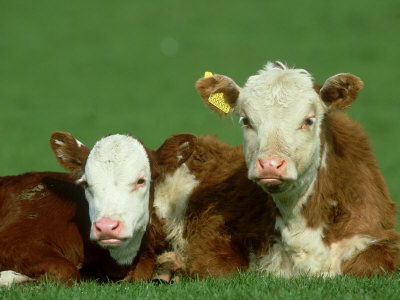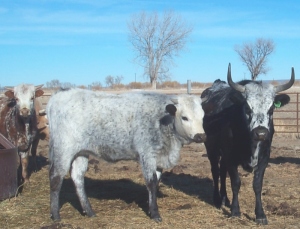 |
| Hereford (Bos Taurus) |
510 million km² of our total world surface, 362 million km² of our total water seas, and 148 million km² of land. Upon our vast, beautiful world inhabits 7.07 billion human beings and 1.3 billion head of cattle, consisting of 800 different breeds. Yes, you read that correctly over 800 different recognizable breeds of cattle adapted to our climate. The breeds fall into two closely related categories, or subspecies of one species. Bos indicus (or Bos taurus indicus) cattle, also called zebu, are adapted to hot climates. Bos taurus (or Bos taurus taurus) are the typical cattle of Europe, north-eastern Asia, and parts of Africa – they are referred to in this list as "taurine" cattle, and many are adapted to cooler climates. Taurus/indicus hybrids are widely bred in many warmer regions, combining characteristics of both types.
Different breeds of cattle produce high yields (quality) of specific types of food. Some multipurpose cattle have been breed to produce a variety of high yielding products that go into our fridge. For example : the Corriente cattle are a Spanish decedent brought to America in the 15th century that have characteristics of dairy, beef, draught, and sport cattle. They are also used in today in rodeo's for sports such as: team roping and steer wrestling. The meat they produce is leaner than most meat from beef cattle. They are drought cattle because they can live on significantly less water and on a sparse open range, eating less than most cattle. Corrientes are also known as accomplished escape artists, as they can leap a standard barbed-wire fence and squeeze through fairly small openings.
Beef cattle are raised for meat production and are bred to produce high marbled beef. Angus cattle are an example of a high yielding beef animal. They are naturally polled (do not have horns) and are either solid red or black. Have you ever heard of the "Angus Burger" at McDonald's? Well began testing this beef in a number of there restaurants in 2006 and the customer response to the burgers was positive, remaining on the market today.
There are also some unrecognized breeds that not to many people know about. Lowline cattle are a small, polled beef breed that derived from the Angus breed. They are small without having a specific dwarfing gene and are used as pets and showing for young children. The cattle are selected these genetically small characteristics being roughly 100cm in height and weighing up to 1300lbs.
I hope you enjoyed learning about a few of the many breeds and their uses in our world.
Check back in tomorrow!
~Carling
 |
| Brahman (Bos Indicus) |
 |
| Corriente Cattle |
 |
| Red Holstein |
There are over 40 different types of Dairy cattle which are bred to produce large quantities of milk. Dairy cow herds around the world can range from a dozen to 15,000. To maintain high milk production, a dairy cow must be bred and produce calves. Female calves (heifers) with dairy breeding may be kept as a replacement cow for the dairy herd. If the replacement cow turns out to milk below standard she will go to market. Male calves will either be used as a breeding bull or sent to market for sale. Newborn calves are removed from their mothers quickly, usually in 3 days, because the mother/calf bond increases over time.
Holstein cattle are a type of dairy cow which is know for the highest production of milk in the world. Originating in Europe, the Dutch breeders bred and oversaw the development of the breed with the aim of obtaining animals which would make best use of grass, the area's most abundant resource. The result was an efficient, high-producing black-and-white dairy cow. It is black and white due to artificial selection by the breeders. You can also find this breed in a brown and white called Red Holsteins and no these are not chocolate milk cows.
Beef cattle are raised for meat production and are bred to produce high marbled beef. Angus cattle are an example of a high yielding beef animal. They are naturally polled (do not have horns) and are either solid red or black. Have you ever heard of the "Angus Burger" at McDonald's? Well began testing this beef in a number of there restaurants in 2006 and the customer response to the burgers was positive, remaining on the market today.
 |
| Black Angus Cattle |
There are also some unrecognized breeds that not to many people know about. Lowline cattle are a small, polled beef breed that derived from the Angus breed. They are small without having a specific dwarfing gene and are used as pets and showing for young children. The cattle are selected these genetically small characteristics being roughly 100cm in height and weighing up to 1300lbs.
 |
| A full grown Lowline cow and her calf |
I hope you enjoyed learning about a few of the many breeds and their uses in our world.
Check back in tomorrow!
~Carling

No comments:
Post a Comment